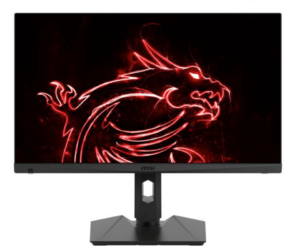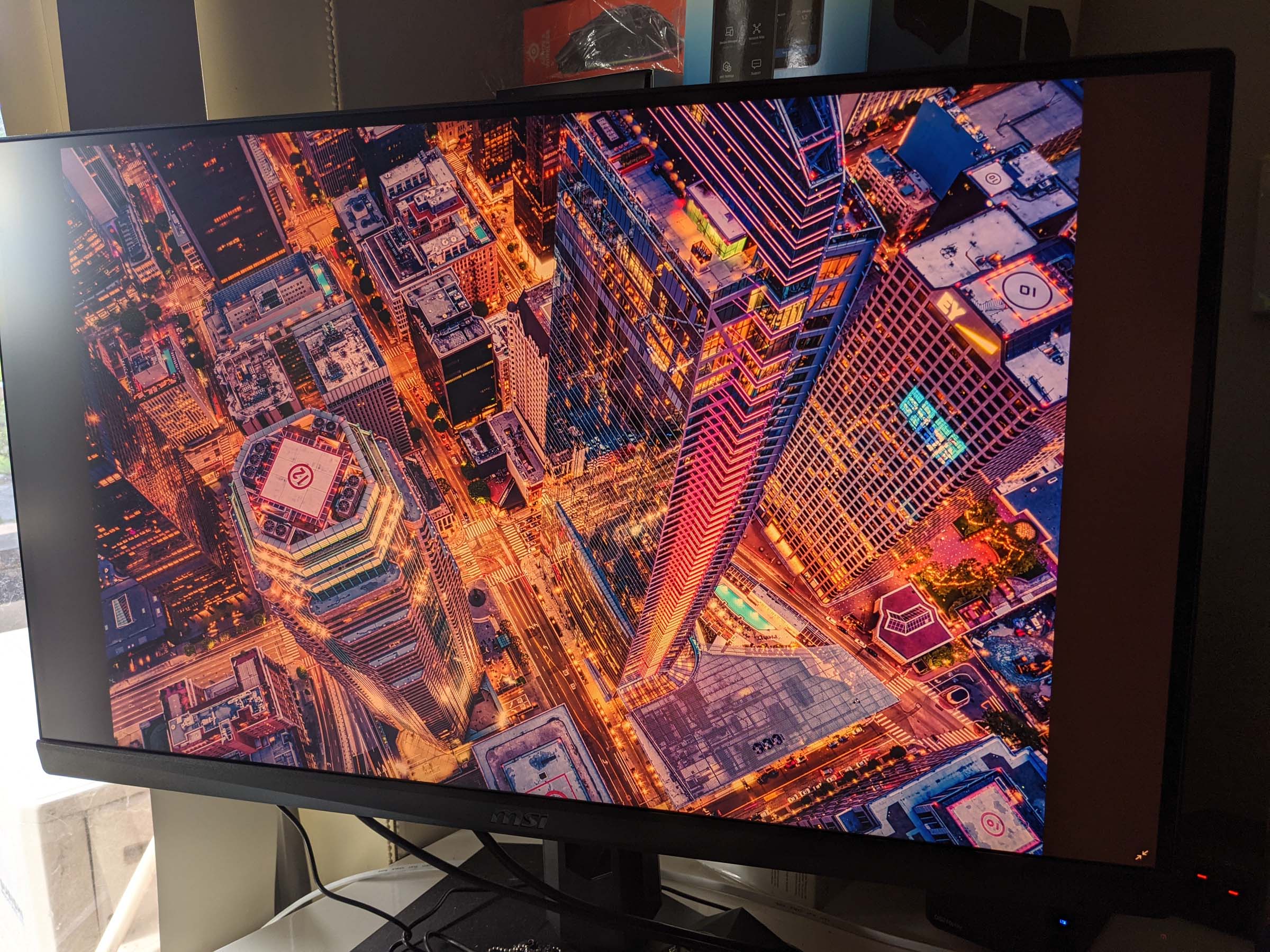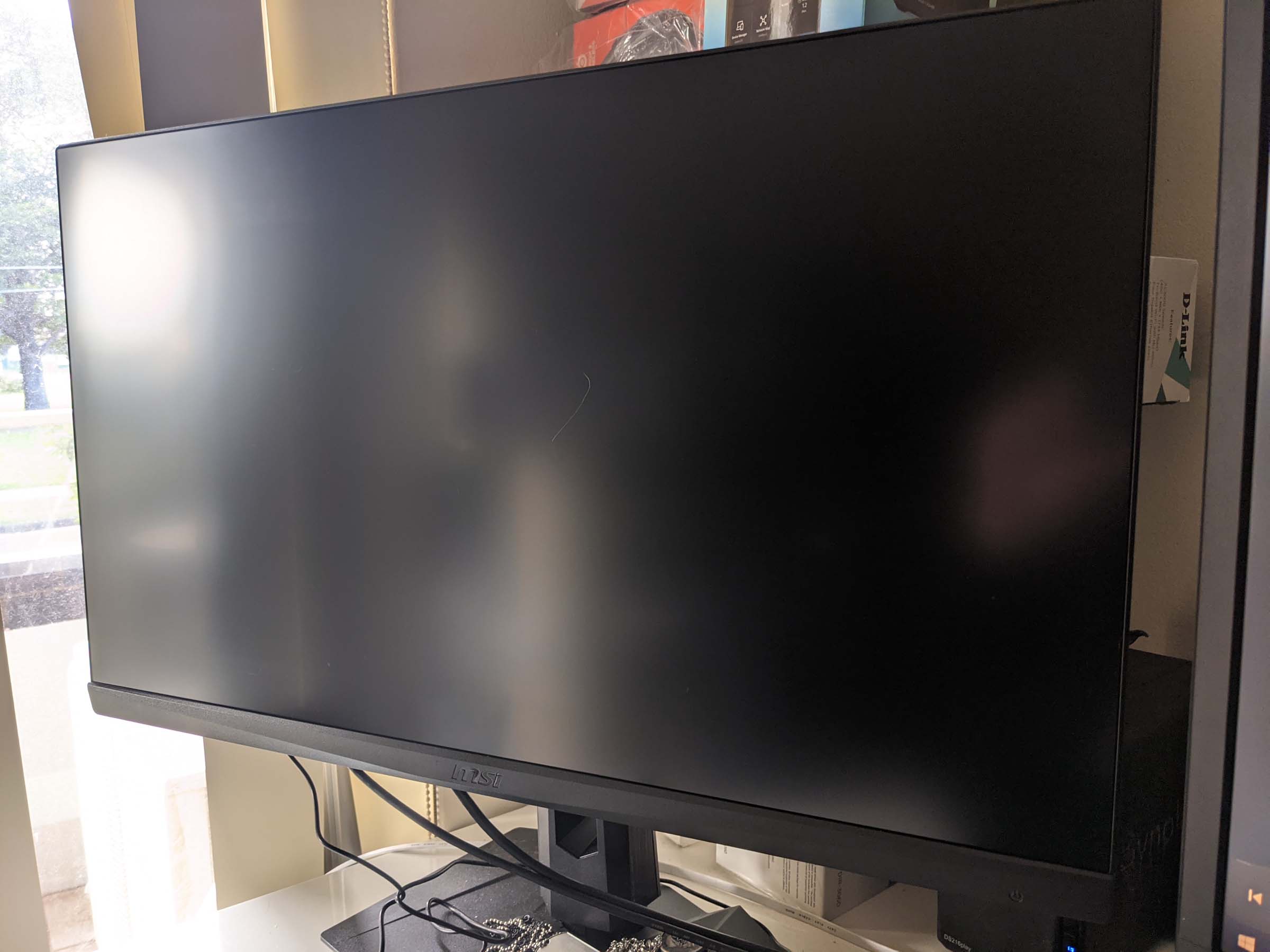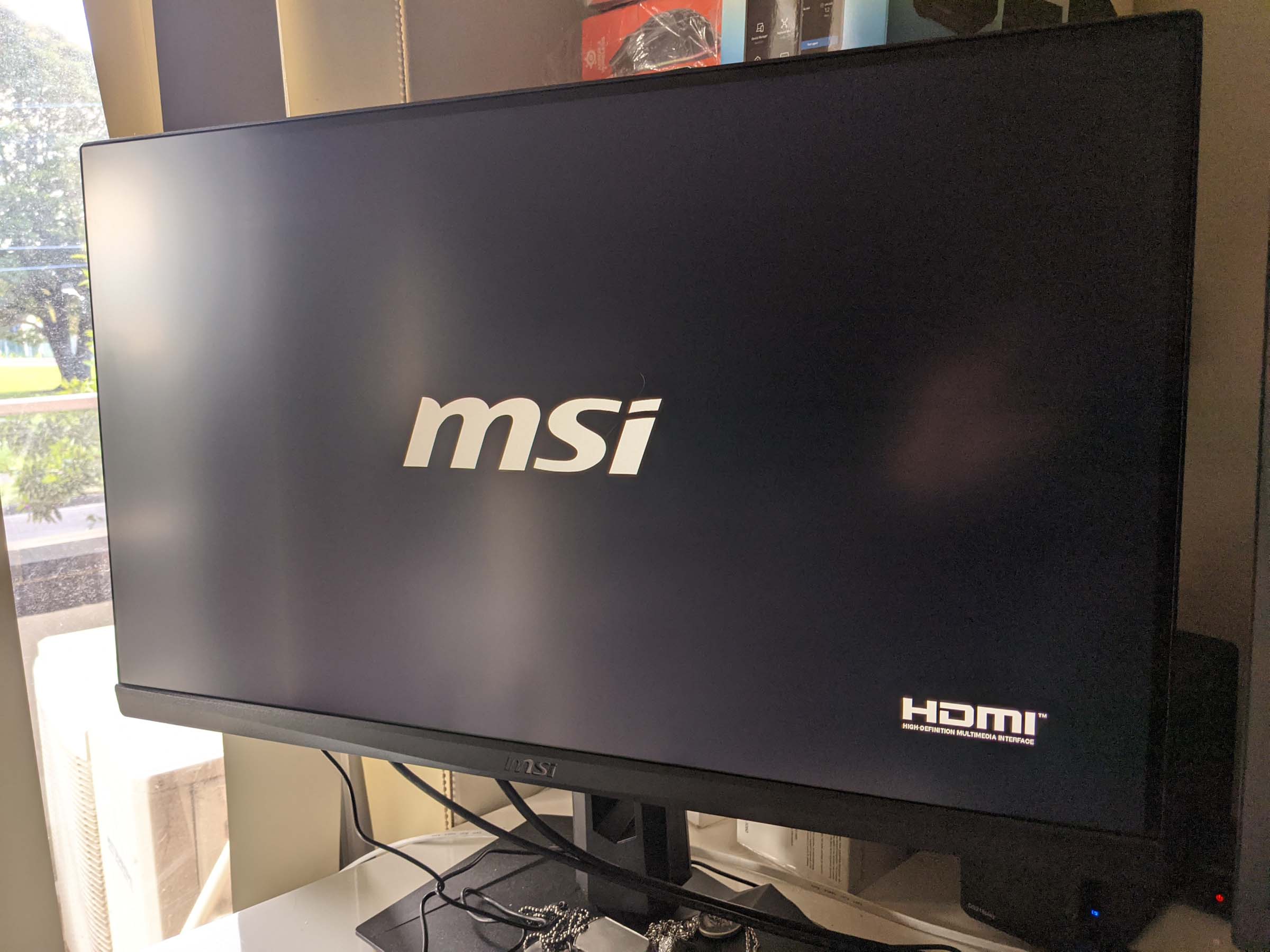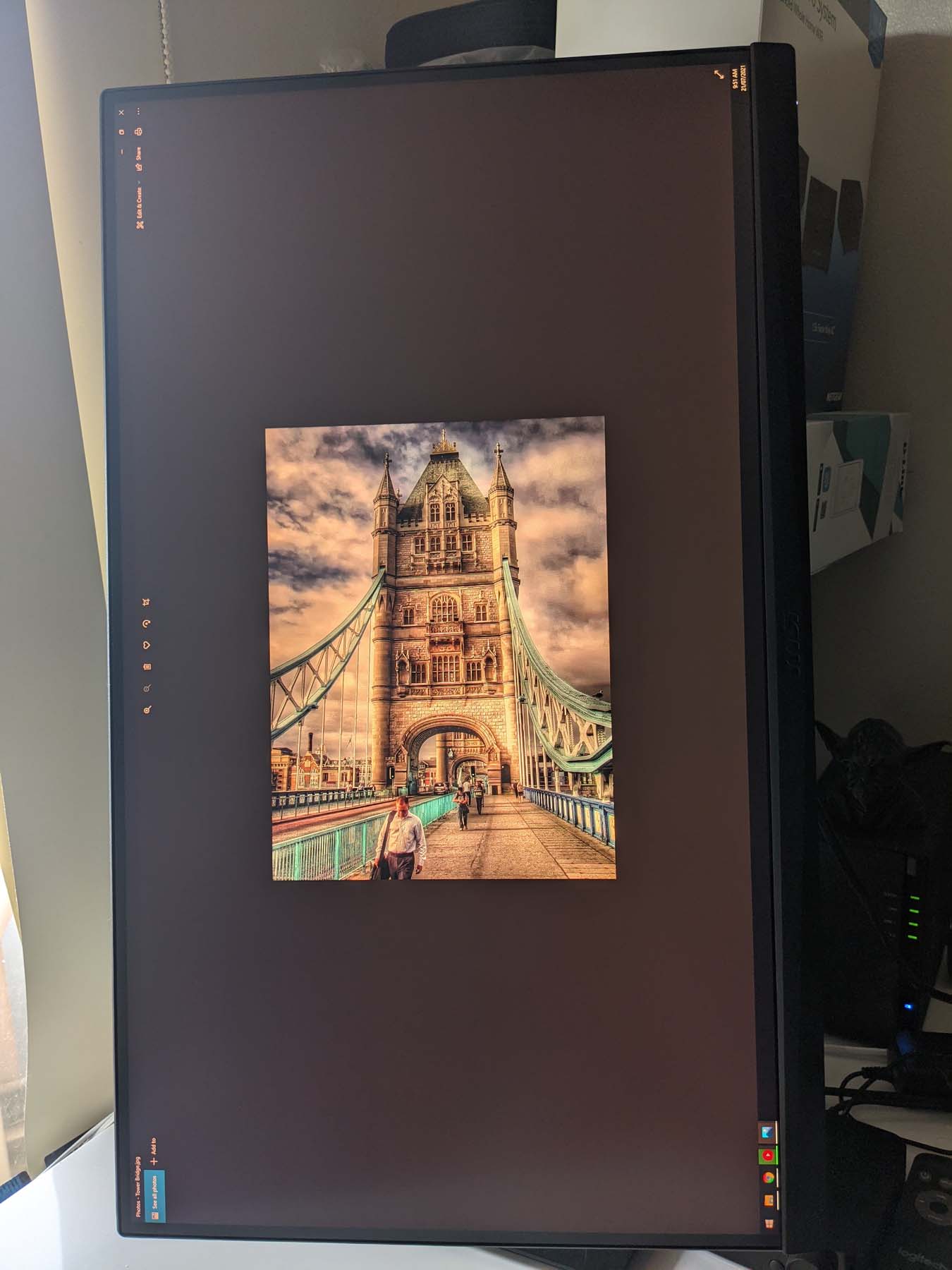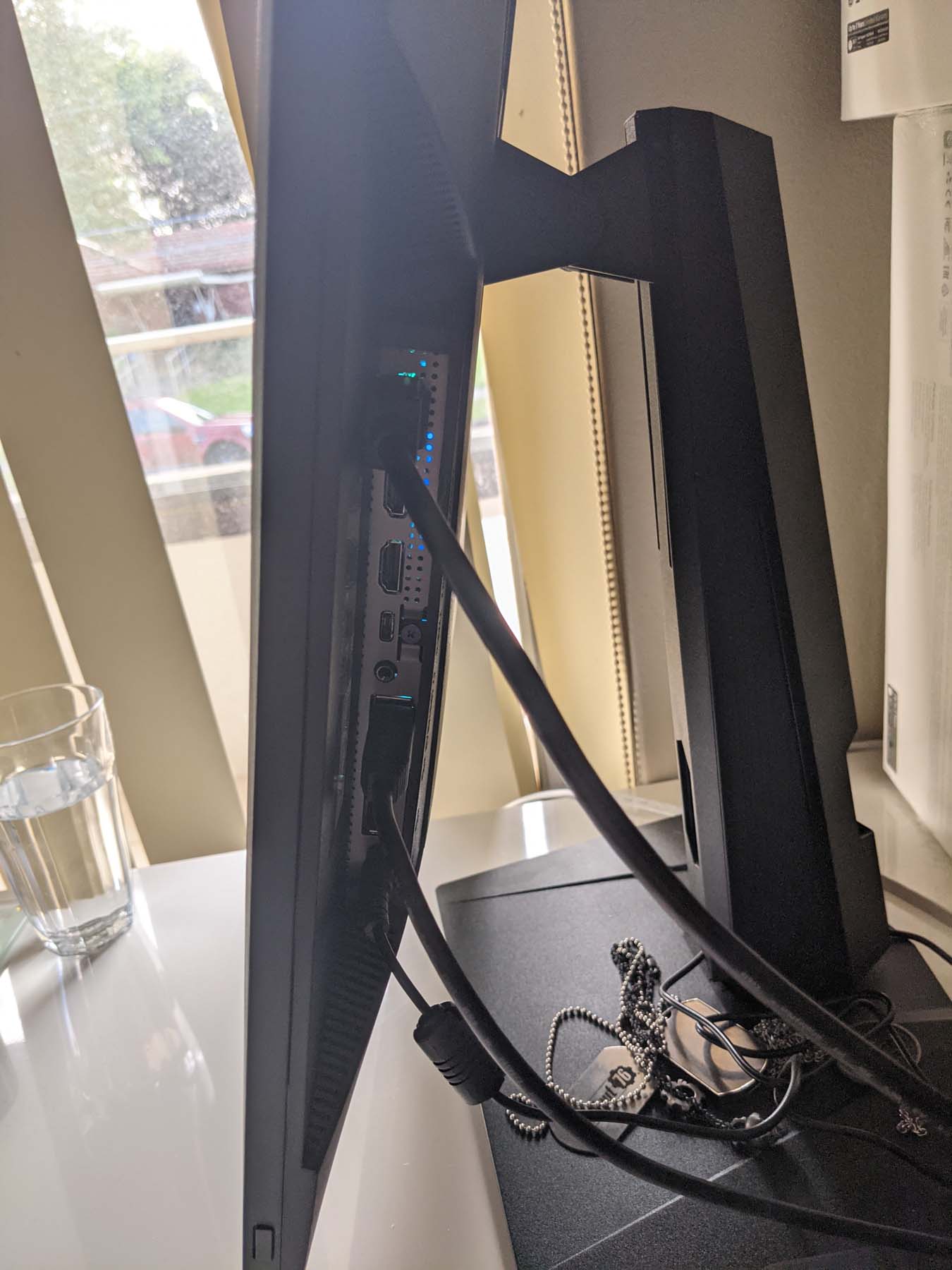A month ago, when I first connected the MSI Optix MAG274QRF-QD gaming monitor, it was a night-and-day difference between my two other monitors at the time. The first was an older 27-inch Asus monitor where, honestly, there was no contest in comparisons even on the default desktop view. This older Asus monitor had a washed-out look, while my then main screen (the Acer Predator XB271HU), had an immediately noticeable improvement in image quality compared to the ageing Asus screen.
Still, even on default settings and without tweaking, the HDR of the MAG274QRF-QD makes everything from a desktop wallpaper and web browsing through to video playback and gaming look a whole lot better. The only minor disclaimers for the HDR is it’s not the brightest and it doesn’t seem to play nice with text on lighter backgrounds, most noticeable with the dot in the letter ‘i’, the tail on the letter ‘e’ and full stops, all of which appeared as stuck fully lit pixels during my Windows tests. In fairness, this is very specific to particular use-cases which, for me, were the taskbar and WhatsApp desktop software.
The bigger compromise is if you want HDR gaming, you can’t tap into all of of the MAG274QRF-QD’s competitive features. Because this is marketed as an esports monitor, there’s a good chance you’re considering buying the MAG274QRF-QD to gain a competitive edge in online multiplayer, which means you’ll want to disable HDR so you can activate the great Night Vision feature.
This baked-in feature ups the brightness in darker areas, which is a viable replacement over using things like Nvidia filters to artificially improve visibility in high-lethality, highly competitive games like Hell Let Loose or for tackling the Rose-skin dark-corner campers in Call of Duty: Warzone. Sure, you’re sacrificing colour depth by disabling HDR, but the MAG274QRF-QD already has an impressively wide colour gamut, combined with the high contrast ratio of a rare flat-screen VA panel (which are usually either IPS or TN).
There’s another technical compromise to make to eke the most out of the MAG274QRF-QD, too. While it can have a response time as low as 1ms, this comes by activating Anti Motion Blur which, in turn, disables FreeSync (otherwise it’s at 4ms grey-to-grey response time). For those unaware, FreeSync is an AMD-developed adaptive-synchronisation technology that reduces and removes screen tearing and stutters. It makes for a more pleasant playing experience when enabled and, with the MAG274QRF-QD, it is also compatible for those who have G-Sync-compatible Nvidia graphics cards (like the recently reviewed Nvidia GeForce RTX 3070 Ti).
Normally, I wouldn’t labour these points but given that it’s being sold as an esports screen, these sorts of detractors will be lessened or greatened depending on whether you want a ‘full-sweat’ display for 165Hz ultra-responsive gaming or whether you’ll take the slight responsiveness sacrifice for a prettier overall image.
